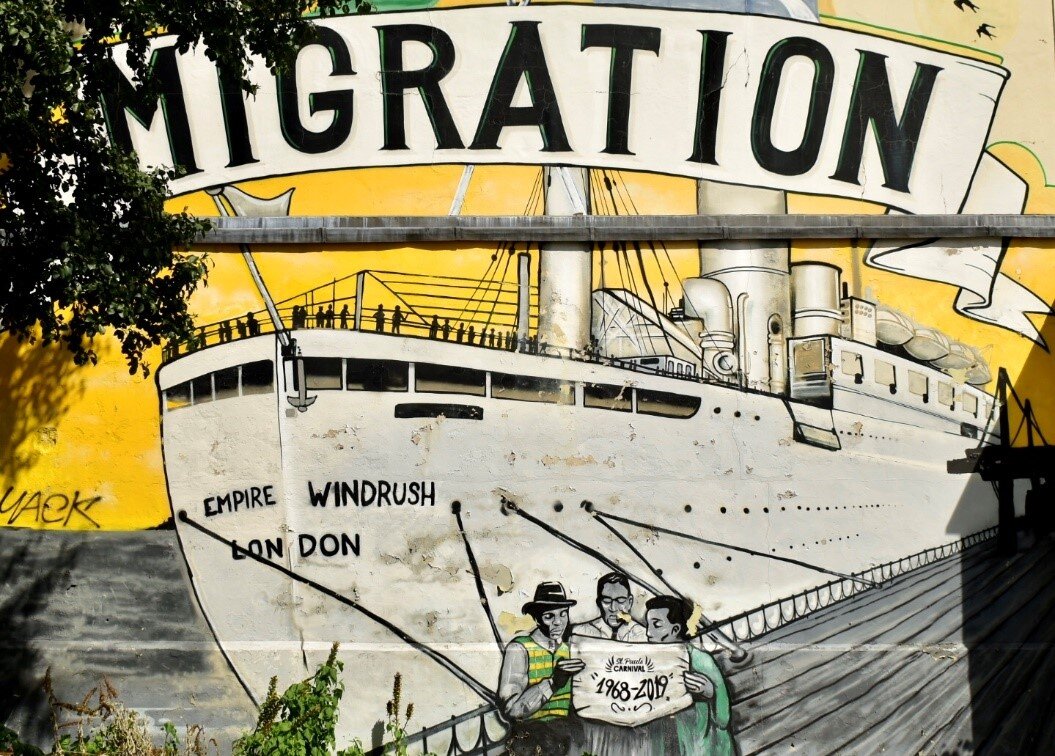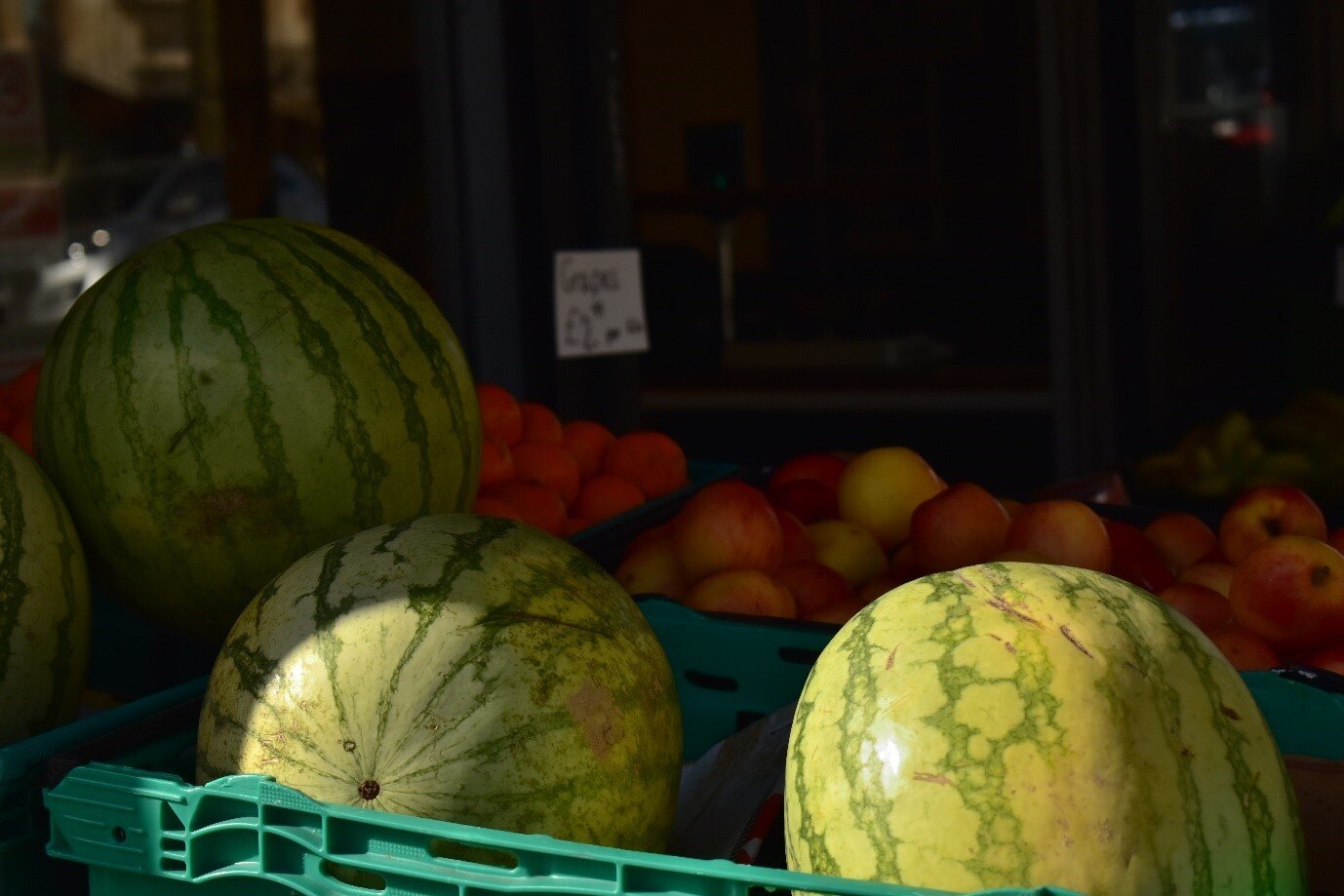Building a community: How foreign cuisine has shaped Bristol and Britain, turning colonial assimilation tactics on their heads.
Britain’s global cultural prominence has been built upon the historical spreading of British values at the expense of foreign culture. So why is it that food - the lifeblood of these civilisations - has been ceaselessly championed by our nation?
To walk down Bristol’s Gloucester Road is to be swept along in a vibrant stream of life. Delivery riders zip along the damp streets and pavements, weaving through pedestrians and vehicles alike while music blares from surrounding bars, cars and boom boxes, providing passers-by with a momentary soundtrack for their day. With each step, the fragrant aroma of a bubbling curry gives way to the smoky lure of barbeque which in turn becomes the saliva inducing, heavy tang of a stir-fry.
This is everyday life in a contemporary and multi-ethnic Britain. However, the cultural pluralism which we revel in today conceals a historically long-held desire for homogeneity – a cultural melting pot, but a very British one - an ideal formalised during the reign of the British Empire. The idea of British superiority, a notion that was so deeply entwined with the Empire that to speak of one is to speak of the other, necessitated the classification of foreign populations, customs, and cultures as inferior. The mission to export British values to the "inferior” and “savage" peoples was one of the premier driving forces which led Britain across the Globe but there was one major difficulty in achieving an all-encompassing, authentic British experience abroad: the food.
It quickly became apparent that British ideals were much easier to sow in these foreign lands than the crops that the colonisers were accustomed to. This meant that - during mealtimes at least - the British were the ones forced to break from tradition. This new dietary normal amounted to a blend of British culinary practices (the extensive use of nutmeg, cinnamon, and cloves) with local, indigenous ingredients and techniques which soon became the precursor to modern fusion cuisine – a practise which should rightfully be considered as the second greatest injustice Britain has ever inflicted upon rest of the world. The “fusion confusion” of the late 20th century involved setting nearly everything in aspic jelly, after all. The blending of indigenous and British cuisines stood in stark contradiction with the colonial policy of assimilation which had already proved to be extremely successful in altering nearly all other areas of the indigenous populations’ lives.
This was, in India and elsewhere in the colonies, often initiated through the implementation of a British educational system which, as stated by Whig politician Thomas Macaulay in the year 1835, aimed to “form a class who may be interpreters between us and the millions whom we govern; a class of persons, Indian in blood and colour, but English in taste, in opinions, in morals, and in intellect.” Lessons taught within the classroom swiftly manifested themselves throughout the home. Dining tables and chairs sprung up where cushions had once sufficed, cutlery replaced the more traditional ‘hand-to-mouth’ method of eating, and a grand assortment of porcelain and metal dishes began to clutter up kitchens everywhere– apparently us Brits have always had an affinity for rarely used crockery.
As a result, the British found themselves in the peculiar position of having their culinary desires sated in familiar rooms with familiar utensils but with extremely unfamiliar dishes and tastes. The Indians’ sophisticated use of spice alongside the cuisine’s malleability ensured that – in the colonies at least – British ideals concerning food changed rapidly. This was confirmed during the 19th and 20th centuries when, despite many imported British foodstuffs becoming more readily available, distinctly hybrid curry dishes (such as mulligatawny, kedgeree, pish pash and chicken country captain) remained mainstays of the colonial diet. Despite this unprecedented cultural triumph which ensured the survival of Indigenous ingredients, techniques, dishes and ultimately culture, the full extent of indigenous cultural influence over Britain was still yet to be demonstrated.
Back home in Britain, the rapid pace of social transformation, spurred by the industrial revolution, ensured that mealtimes had become an opportunity to demarcate classes and as such, dishes which would once have been considered ‘unpatriotic’ came to be exalted due to their ‘exotic’ and consequently expensive nature. This role was initially occupied by French haute cuisine which had been championed King Edward VII. However, returning East India Company merchants and officials rapidly popularised colonial cuisine – most namely curries - within private homes and coffee houses during the eighteenth, nineteenth and early twentieth centuries, particularly in port cities such as Bristol and Liverpool. A remarkable feat considering the cuisines’ associations with supposedly ‘savage’ and ‘uncivilised’ foreign populations.
By the second half of the nineteenth century, curries even began to feature regularly in British cookbooks. The Breakfast Book, for example, was one such publication, first printed in 1865, and is a cookbook deemed so important to British culture that it was republished in 2010 in an effort to bring it back from antiquity. Thus, by the turn of the twentieth century, the British Empire had effectively and irrevocably altered the very ideals it sought to export, and unintentionally spread those it wished to stifle. This era heralded the beginning of Britain’s unmitigated love affair with anglicised foreign cuisine; a love that birthed the meteoric rise of dishes such as sweet and sour pork, chicken tikka masala and the infamous matchday curry pie, all of which bear little, if any, resemblance to their native origins. Whilst the authenticity of these dishes remains questionable, for many British citizens who could not afford excursions abroad throughout the 19th and 20th centuries, they offered a rare glimpse of a world outside of Britain’s borders, something that many longed for and began to experience first-hand as immigration into Britain expanded and the colonial dominance of the Empire diminished.
With the cessation of World War Two, Britain - in desperate need of labour to support its war-torn economy - put out a call amongst its colonies, urging individuals to come to the aid of the ‘Motherland.’ Consequently, the British Nationality Act of 1948 enabled colonial populations – spearheaded by Afro-Caribbeans on the now infamous Empire Windrush – to immigrate into Britain, settling initially in London and then further afield in cities such as Bristol and Leeds.
In Bristol, a predominately Jamaican immigrant population settled in St. Paul’s, bringing with them new music, art and worldviews which have undoubtedly shaped the city for the better. However, upon arrival in Bristol, the Jamaican population, much like their compatriots across London and beyond, were frequently subjected to racial abuse and excluded from public spaces, including pubs and nightclubs. Determined to make a success of the move, many Jamaican communities continued to socialise in private spaces, hosting parties which relied heavily upon both Jamaican ska beats and authentic Jamaican food. These private parties and gatherings eventuated the foundation of street carnivals which, despite initial scepticism, drew many non-Jamaicans, attracted by the unique sound-system-centred music - which in Bristol alone evolved into numerous distinct genres - and the temptation of genuine Jamaican cuisine. Ackee and saltfish, rice and peas, curried goat and fried dumplings were all offerings which had rarely - if ever - been experienced by Bristol’s white populace and for many, the culinary delights experienced during a carnival marked their first ever experience of non-anglicized foreign cuisine. The popularity of these foods among both the Jamaican and white British population led to the establishment of Jamaican restaurants and cafes within Bristol, the most infamous of these being the Black and White café. However, despite the negative connotations associated with that particular establishment many others thrived throughout the decades. Rice and Things, Glen’s Kitchen and St Mary’s Kitchen are some of the contemporary eateries offering traditional Jamaican cuisine in Bristol today.
The Jamaican population has been joined steadily throughout the decades by many different immigrant populations who have chosen Bristol as their new home and with each new arrival to Bristol comes a new history, ideas, and perspective regarding food. Swagatam Authentic Indian Restaurant produces unparalleled Saag Paneer and deeply flavourful Murg Chettinad while Desi Dera, at the front Bristol’s Pakistani food culture, is renowned for its slow cooked, spicy, and tender Haleem. Not only that, a growing Somali population has brought the delicious, cardamom infused Sambusa dish to Bristol, as well as the highly fragrant Bariis Iskukaris, both of which can be found in Waamo restaurant and café. Bristol, like many other multicultural British cities, is in a moment of incredible gastronomic variation; a time where people are always able to experience real, authentic global cuisine at their every whim. If we are in a culinary golden age then Bristol must surely be at the centre of it.
This food revolution has, of course, given the consumer an incredible culinary freedom, with countless food options being available at every opportunity, but it is also true that those producing these delights have achieved financial security for themselves and in some cases even created a market that had never previously existed. However, the individuals that work in these establishments are not just producing food for profit, they are also – whether consciously or not - taking on the role of cultural custodians, representing the most recent incarnation of an ever-evolving cultural heritage. Although the survival of these dishes is a testament to the durability of its people in resisting assimilation, we should not forget that food should ultimately be used to bring people together. It does not matter whether you are sharing a beer or a Ting, a barbeque, or a curry, it is the time you share and the interactions you have which are of the most importance. So, go and try new foods, enjoy the privilege of being amongst the first generations to have authentic global cuisine on your doorstep. But also, be sure to engage with the people who make them, the regulars who enjoy them and most importantly, the cultures which birthed them.
-Jacob Smith
About the author
Jacob Smith is a writer whose focus centres on the ever-evolving relationship between peoples. He has a long-held affinity for food and cooking, a fact chiefly attributable to his mother, Liz. Outside of writing, Jacob is the Social media and Communications Officer for Incomindios UK, the British branch of a Swiss-based indigenous rights organisation and is currently concluding his MA Conflict, Security & Development at the University of Exeter.
Find him on Twitter: @JacobSm10470232









